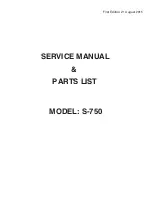
English
9
Initial startup
Charging the battery
DANGER
Inappropriate use of the charger
Electric shock
Adhere to the mains voltage and fuse values specified on
the device type plate.
Only use the charger in dry rooms with sufficient ventila-
tion.
ATTENTION
Accumulation of dangerous gases under the tank
during the charging process
Risk of explosion
Pivot the waste water tank upwards before charging low-
maintenance batteries.
ATTENTION
Using an unsuitable charger
Risk of damage
Do not connect the charger to the device-side battery con-
nector.
Use only a charger suitable for the type of battery installed.
Read the operating instructions of the charger manufactur-
er and observe the safety instructions in particular.
The average charging time is approx. 10-15 hours.
The device cannot be used during the charging process.
Note
The device has deep discharge protection, i.e. the brush
motor and turbine are switched off automatically when the
permitted minimum capacity level is reached.
1. Drive the device directly to the charger and do not drive
on slopes.
2. Pull out the device-side battery connector.
1
Battery plug, device side
2
Battery plug, battery side
3. Connect the battery-side battery connector to the charger.
4. Plug the mains plug of the charger into the socket.
5. Carry out the charging process in accordance with the
operating instructions for the charger.
6. Connect the device-side battery connector to the bat-
tery-side battery connector.
Operation
ATTENTION
Risks during operation
Danger of injury
Release the safety button in the case of danger.
Filling with operating materials
Filling with fresh water
1. Open the fresh water tank lock.
2. Fill fresh water (max. 60 °C) to the lower edge of the fill-
ing nozzle.
Note:
The fresh water hose can be clamped in the hose
switch during filling.
3. Close the fresh water tank lock.
Notes on detergents
몇
WARNING
Unsuitable detergents
Health risk, damage to the device
Use only recommended detergents. The operator carries
all increased risks relating to operational safety and in-
creased risk of accidents if using other detergents.
Use only detergents free of solvents, salt and hydrofluoric
acid.
Adhere to the safety instructions stated on the detergent
packaging.
Note
Do not use heavily foaming detergent.
Recommended detergents
Detergent
1. Fill the detergent into the fresh water tank.
Note:
The cap of the fresh water tank filling hole can be
used for measuring the detergent. It is fitted with a scale
on the inside.
Adjusting the water volume
1. Adjust the water volume via the regulating knob to suit
the degree of contamination of the floor covering.
Note
Perform initial cleaning tests with a low water volume.
Increase the water volume step by step until achieving
the desired cleaning result.
Battery type
Charger
6.654-242.0
6.654-434.0
6.654-124.0
6.654-434.0
6.654-119.0
6.654-435.0
8.629-184.0
6.654-419.0
1
1
2
Usage
Detergent
Maintenance cleaning of all water-re-
sistant floors
RM 746
RM 780
Maintenance cleaning of polished
hard surfaces (e.g. granite)
RM 755 es
Maintenance cleaning and basic
cleaning of industrial floors
RM 69 ASF
Maintenance cleaning and basic
cleaning of fine stone tiles
RM 753
Maintenance cleaning of tiles in sani-
tary areas
RM 751
Cleaning and disinfection in sanitary
areas
RM 732
Coating removal on all alkaline-resis-
tant floors (e.g. PVC)
RM 752
Coating removal on linoleum floors
RM 754
Содержание BD 100 W Classic Bp
Страница 2: ......










































